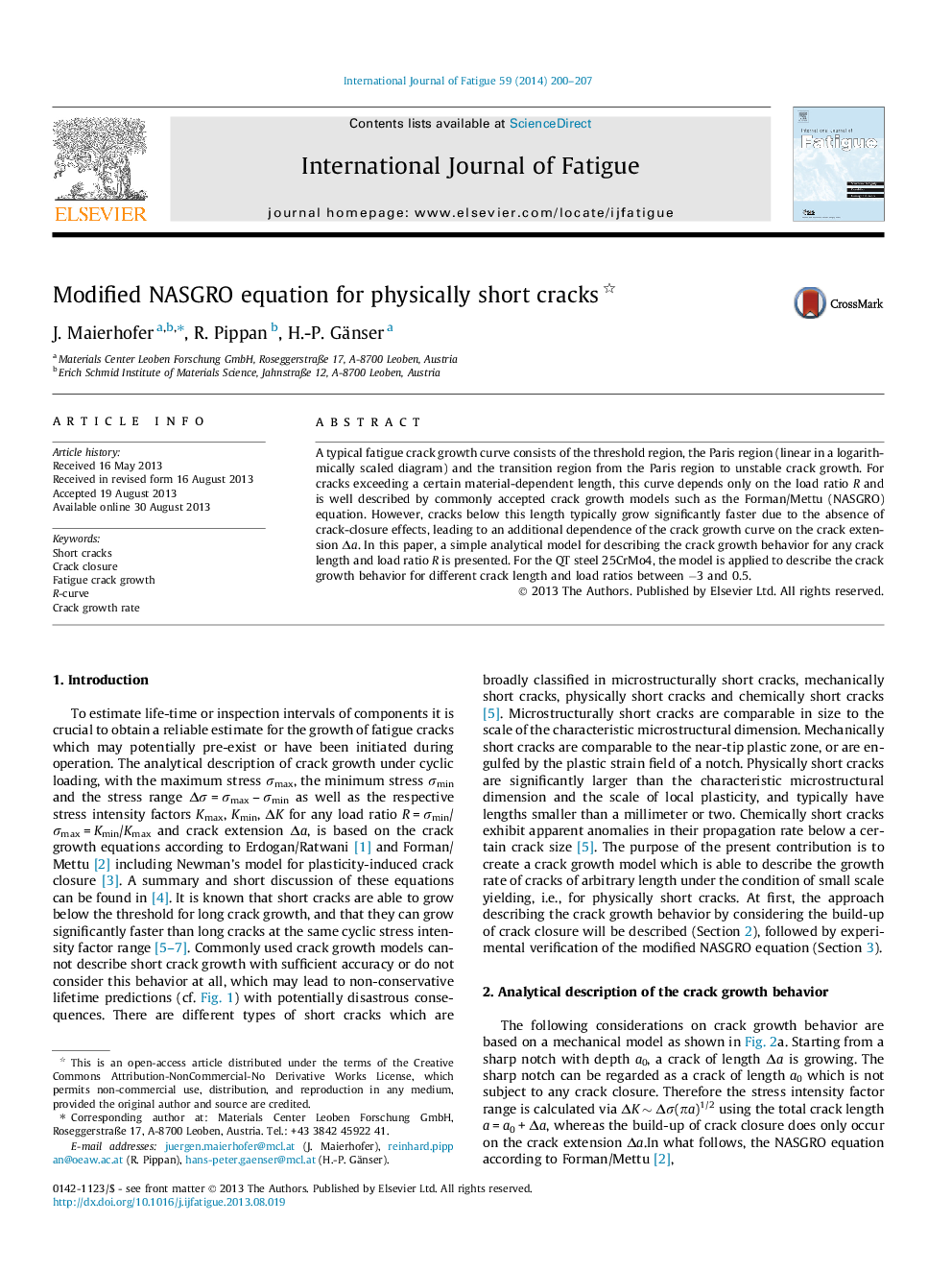| Article ID | Journal | Published Year | Pages | File Type |
|---|---|---|---|---|
| 7172460 | International Journal of Fatigue | 2014 | 8 Pages |
Abstract
A typical fatigue crack growth curve consists of the threshold region, the Paris region (linear in a logarithmically scaled diagram) and the transition region from the Paris region to unstable crack growth. For cracks exceeding a certain material-dependent length, this curve depends only on the load ratio R and is well described by commonly accepted crack growth models such as the Forman/Mettu (NASGRO) equation. However, cracks below this length typically grow significantly faster due to the absence of crack-closure effects, leading to an additional dependence of the crack growth curve on the crack extension Îa. In this paper, a simple analytical model for describing the crack growth behavior for any crack length and load ratio R is presented. For the QT steel 25CrMo4, the model is applied to describe the crack growth behavior for different crack length and load ratios between â3 and 0.5.
Related Topics
Physical Sciences and Engineering
Engineering
Mechanical Engineering
Authors
J. Maierhofer, R. Pippan, H.-P. Gänser,
